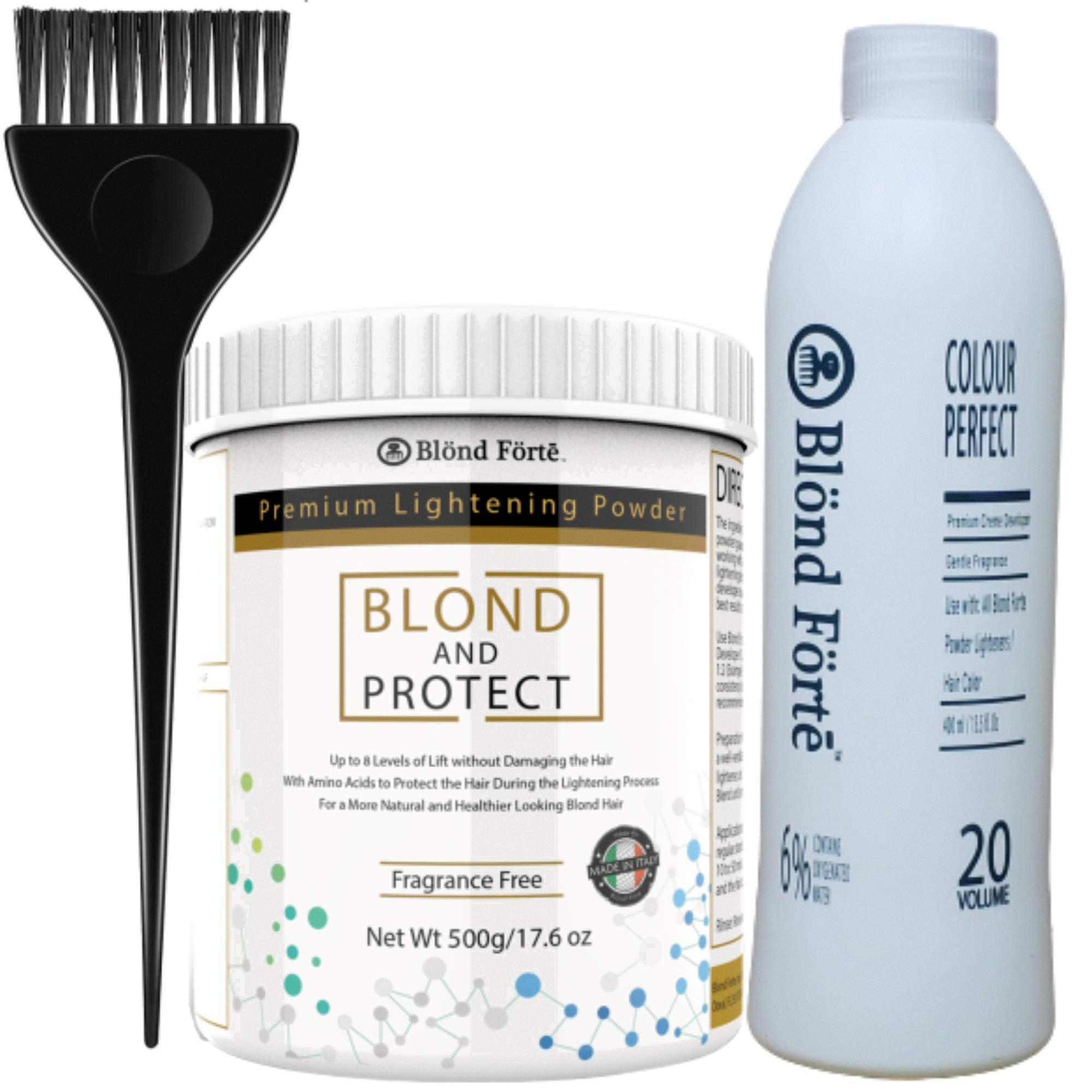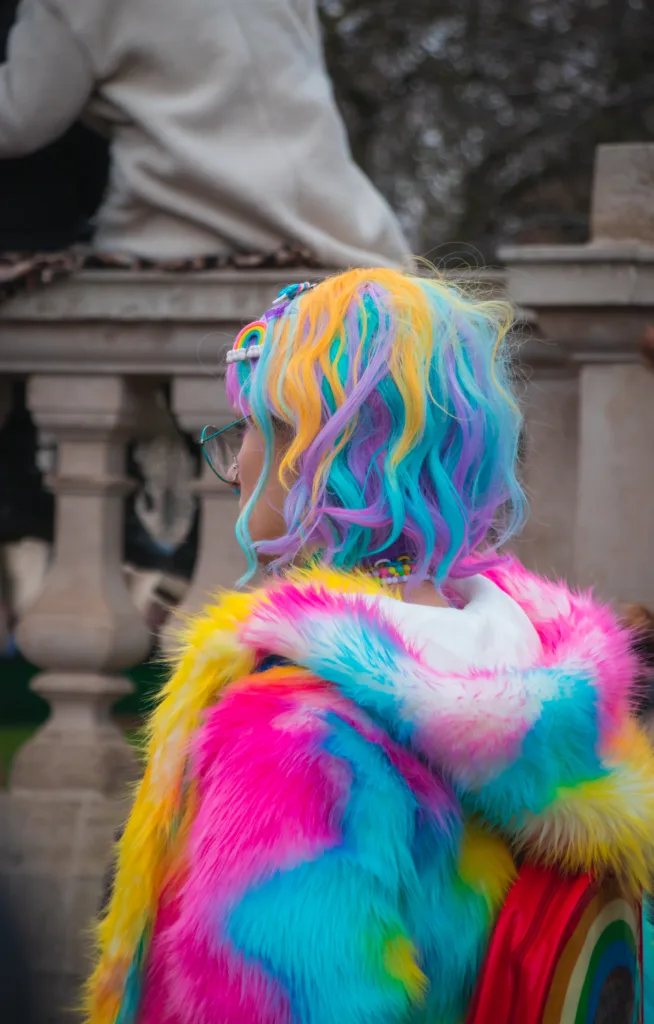When it comes to hair coloring, developers play a key role in achieving the desired results. However, many people are concerned about the potential damage that these chemicals can cause to their hair. In this article, we will explore the question: Is 20 volume developer damaging?
First, it’s important to understand what developers are and how they work. Developers are hydrogen peroxide solutions that are mixed with hair color or bleach to activate the color molecules or lift the natural pigment in the hair. The strength of the developer is measured in volume, with 10 volume being the weakest and 40 volume being the strongest.
When used correctly, 20 volume developer is generally considered safe and effective for most hair types. It can provide 1-2 levels of lift, which is perfect for covering gray hair or creating a subtle change in hair color. However, if used incorrectly or too frequently, 20 volume developer can cause damage to the hair.
One of the main ways that 20 volume developer can be damaging is by over-processing the hair. When hair is over-processed, it can become dry, brittle, and prone to breakage. This is especially true for hair that is already damaged, such as hair that has been previously bleached or colored.
Another potential issue with 20 volume developer is that it can cause scalp irritation or burns if it comes into contact with the skin. This is why it’s important to always wear gloves and apply the product carefully, avoiding contact with the scalp as much as possible.
To minimize the risk of damage when using 20 volume developer, it’s important to follow the instructions carefully and only use the product as directed. If you have particularly fragile or damaged hair, you may want to considr using a lower strength developer or seeking the advice of a professional stylist.
While 20 volume developer can be damaging if used incorrectly or too frequently, it is generally considered safe and effective for most hair types when used as directed. As with any chemical process, it’s important to take precautions and prioritize the health of your hair and scalp.
Which Volume Developer is the Least Damaging?
When it comes to hair coloring, it’s important to choose the right volume developer to achieve the desired results without causing damage to your hair. If you are looking for a developer that is least damaging to your hair, then 10 Volume developer is your best bet.
10 Volume developer is the lowest strength developer available in the market. It contains only 3% hydrogen peroxide, which is the active ingredient that lifts the hair cuticle and allows the color to penetrate the hair shaft. This low strength developer is ideal for depositing tone or tint to your hair without significantly lightening your natural hair color.
Using 10 Volume developer is the best option for thoe who want to maintain their current hair color level while adding a subtle tone or tint. It won’t cause significant damage to your hair and is the least harsh developer option available.
10 Volume developer is the least damaging developer option for those who want to add a tone or tint to their hair color without significantly lifting their natural hair color. It’s important to choose the right developer strength to achieve the desired results without causing damage to your hair.

Source: amazon.com
The Effects of Using 20 Volume Developer on Hair
When it comes to coloring hair, developers play an essential role. A developer is a hydrogen peroxide solution that activates the hair color and helps to lift the hair’s natural pigment. The strength of the developer determines the level of lift and the intensity of the color.
A 20 volume developer is commonly used for permanent hair color application. It can provide 1-2 levels of lift depending on the hair’s natural color and texture. It is the standard developer used for grey coverage, and it is a safe option for most hair types.
However, if the hair is more resistant to color or has a coarse texture, a stronger developer may be needed. It is important to note that a 20 volume developer should not be used as a developer for toners or glazes. Toners and glazes are used to maintain a natural base and enhance the tone of the hair. Using a 20 volume developer can lead to over-processing and damage to the hair.
A 20 volume developer is a standard strength developer used for permanent hair color application. It can provide 1-2 levels of lift and is safe for most hair types. However, for more resistant or coarse hair, a stronger developer may be needed. It should not be used for toners or glazes to avoid over-processing and damage to the hair.
Is 20 Volume Developer Strong Enough?
The strength of a developer is determined by the amount of hydrogen peroxide it contains. The higher the volume of the developer, the higher the concentration of hydrogen peroxide, and the stronger it is.
In the case of 20 volume developer, it is considered a standard strength developer and is widely used in salons. It contains 6% hydrogen peroxide and is strong enouh to provide 1-2 levels of lift when used with permanent hair color. This developer is also commonly used for grey coverage as it can effectively penetrate the hair shaft and deposit color pigments.
However, it is important to note that the strength of the developer needed may vary depending on the hair type and desired result. For instance, if the hair is more resistant, a stronger developer may be needed to achieve the desired level of lift.
20 volume developer is strong enough for most hair coloring purposes and is a commonly used developer in salons. However, it is essential to consider the hair type and desired result when selecting a developer strength.
The Effects of Using Too Much 20 Volume Developer
When it coms to coloring hair, using the right amount of developer is crucial. If you use too much 20 volume developer, it can have some negative effects on your hair color. Here’s what you need to know:
1. Lightening: Too much 20 volume developer can lead to hair lightening. This is because 20 volume developer is designed to lift the hair’s color by up to two levels, and if you use too much, it can lift the hair color beyond your desired shade.
2. Uneven coloring: When you use too much 20 volume developer, it can lead to uneven hair coloring. This is because the developer can dry out some parts of your hair, while other parts remain wet, leading to an uneven application of color.
3. Damage: Overuse of 20 volume developer can also cause damage to your hair. It can dry out your hair, making it brittle and prone to breakage. This is especially true if you have fine or fragile hair.
4. Fading: Using too much 20 volume developer can cause your hair color to fade faster. This is because the developer can strip the hair of its natural oils, which help to lock in the color.
To avoid these negative effects, it’s important to use the right amount of developer when coloring your hair. Follow the instructions carefully, and if in doubt, seek the advice of a professional hair colorist.

Conclusion
The use of 20 volume developer can potentially cause damage to the hair if it is not used properly or if it is overused. While it is a standard developer for grey coverage and can povide 1-2 levels of lift when used with permanent hair color, it should not be used for toner or glazes when maintaining a natural base. It is important to consider the hair type and condition before using 20 volume developer, as more resistant hair types may require a stronger developer. Additionally, using too much developer can result in a thinner and flatter end result that may not last as long. Ultimately, proper application and consideration of the hair’s needs are key in avoiding damage when using 20 volume developer.
